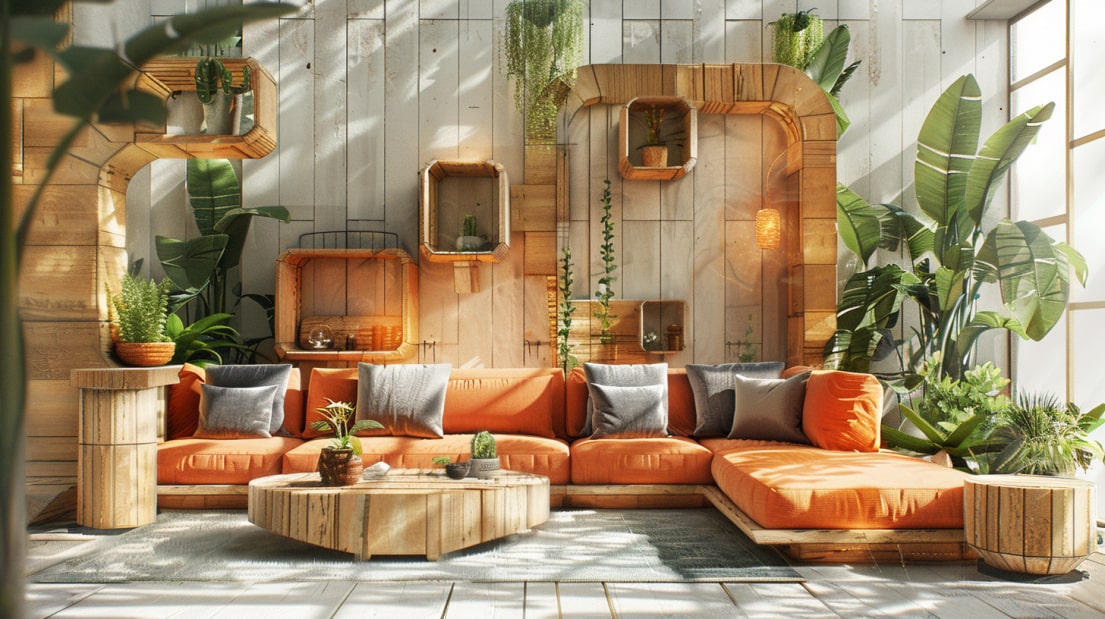the concept of sustainability has gained significant traction in various industries, and home furniture is no exception. With a growing awareness of environmental issues, many consumers are now seeking sustainable home furniture options that not only beautify their living spaces but also minimize their ecological footprint. This shift towards eco-friendly choices reflects a broader commitment to environmental stewardship and responsible consumption.

Choosing sustainable home furniture means opting for pieces made from renewable resources, recycled materials, and non-toxic finishes. Not only do these options promote a healthier living environment, but they also support companies that prioritize ethical manufacturing practices. In this article, we will explore different aspects of sustainable home furniture, from materials to design principles, providing you with valuable insights on how to make eco-friendly choices for your home.
The Importance of Sustainable Home Furniture
Understanding the Impact
Sustainable home furniture plays a crucial role in reducing environmental harm. Traditional furniture manufacturing often involves harmful chemicals and unsustainable harvesting of materials, contributing to pollution and deforestation. By choosing sustainable options, you support practices that reduce waste and lower carbon emissions, fostering a healthier planet for future generations.
Moreover, investing in sustainable home furniture can lead to better indoor air quality. Many eco-friendly pieces use natural materials and finishes that emit fewer volatile organic compounds (VOCs), improving the overall health of your living space. This conscious choice not only benefits the environment but also enhances your well-being.
Supporting Ethical Practices
When you opt for sustainable home furniture, you are also supporting ethical labor practices. Many companies that produce eco-friendly furniture prioritize fair wages and safe working conditions for their employees. By choosing these brands, you contribute to a more equitable economy and help ensure that workers are treated with dignity and respect.
Additionally, many sustainable furniture brands engage in philanthropic efforts, such as planting trees or supporting local communities. This reinforces the idea that purchasing sustainable home furniture can extend beyond personal benefits, contributing positively to society as a whole. Your choices matter, and they can drive change in the industry.
Eco-Friendly Materials for Furniture
Sustainable Wood Choices
One of the most common materials used in furniture is wood. However, not all wood is created equal. Sustainable home furniture often incorporates wood sourced from responsibly managed forests, such as those certified by the Forest Stewardship Council (FSC). This certification ensures that the wood is harvested in a manner that maintains the forest’s biodiversity and ecosystem.
Reclaimed wood is another excellent option for sustainable home furniture. This type of wood is salvaged from old buildings, furniture, or other structures, giving it a new life while reducing the demand for newly harvested timber. Not only does reclaimed wood add character to your home, but it also minimizes waste and environmental impact.
Alternative Materials
In addition to wood, many eco-friendly furniture pieces are crafted from alternative materials. Bamboo, for example, is a highly renewable resource that grows quickly and requires little water. Furniture made from bamboo is not only durable but also stylish, making it an attractive choice for sustainable home furniture.
Recycled materials are also gaining popularity in the furniture industry. Many manufacturers are now producing chairs, tables, and other pieces using recycled plastics or metal, reducing waste and conserving resources. By choosing furniture made from these innovative materials, you can create a stylish and environmentally friendly living space.
Design Principles for Sustainable Home Furniture
Timeless Design
When selecting sustainable home furniture, consider timeless designs that won’t go out of style. Opting for classic, versatile pieces means you won’t need to replace your furniture frequently, thus reducing waste. Timeless designs also tend to be more adaptable, fitting seamlessly into various decor styles and allowing you to change your home’s look without needing to buy new furniture.
Additionally, durable construction is vital for sustainable furniture. Look for pieces made with high-quality materials and craftsmanship, as they will withstand the test of time. Investing in well-made furniture minimizes the need for replacements and supports a more sustainable lifestyle.
Multi-Functional Furniture
Another design principle to consider is functionality. Multi-functional furniture, such as a sofa bed or an ottoman with storage, maximizes space and reduces the need for additional pieces. This is especially important in smaller homes where space is limited, allowing you to maintain an organized and clutter-free environment.
Furthermore, choosing modular furniture can contribute to sustainability. Modular pieces can be reconfigured or expanded as needed, reducing the likelihood of waste over time. By selecting versatile designs, you enhance both the functionality and sustainability of your home.
Conclusion, Incorporating sustainable home furniture into your living space is a powerful way to express your commitment to environmental responsibility. By understanding the importance of sustainable materials and ethical practices, you can make informed choices that benefit both your home and the planet. Embracing eco-friendly design principles ensures that your furniture is not only stylish but also contributes to a healthier and more sustainable future.
As consumers become more conscious of their choices, the demand for sustainable home furniture will continue to grow. By prioritizing eco-friendly options, you not only enhance your living environment but also support the movement towards a more sustainable world. Your home can be a reflection of your values, and sustainable is a beautiful way to showcase that commitment.